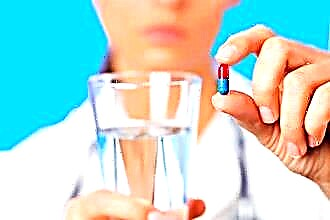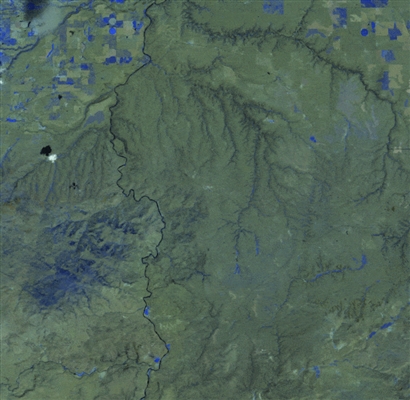Description of the disease, cause and stage
 The abdominal aorta (BA) is the largest vessel in the human body. It begins at the level of the XII thoracic vertebra and ends in the IV-V lumbar region. The artery feeds almost all internal organs (stomach, intestines, liver, kidneys, pancreas, peritoneum, spleen, ovaries or testes in men), which explains the complexity of the clinical picture when it is affected.
The abdominal aorta (BA) is the largest vessel in the human body. It begins at the level of the XII thoracic vertebra and ends in the IV-V lumbar region. The artery feeds almost all internal organs (stomach, intestines, liver, kidneys, pancreas, peritoneum, spleen, ovaries or testes in men), which explains the complexity of the clinical picture when it is affected.
The atherosclerotic process of AD is based on the "leakage" of the inner wall of the vessel (intima) lipids with subsequent formation atheroma (plaque)... Their appearance is possible only on the damaged endothelium. From time to time, fatty growths undergo decay and thrombus formation, which causes clinical manifestations of the disease.
Injury to the inner vascular wall is facilitated by:
- chronic hyperlipidemia, dyslipidemia;
- an increase in the sthenic tension of the vascular wall (the endothelium is compressed under the onslaught of blood in patients with hypertension), especially in the places of the vessel branching;
- hyperglycemia;
- smoking (tobacco tar and carbon monoxide increase the permeability of the vascular wall and provoke tissue edema);
- the presence of circulating immune complexes, prostacyclin I2 in infectious, allergic or autoimmune processes;
- violation of blood rheology.
Stages of development of atherosclerosis of the abdominal aorta:
- Preclinical - period of dyslipidemia. It consists in the infiltration of the inner wall of the vessel with fats and the formation of plaques (duration from 5 to 30 years).
- Latent (hidden) - pathological changes in BA can already be detected by instrumental research methods.
- Polymorphic clinical manifestations - there is a variety of symptoms of dysfunctions of internal organs.
- Chronic vessel occlusion - a period of vivid clinical signs characteristic of this disease.
Symptoms
Although the first atheromas most often appear on the walls of the aorta, its large diameter delays the time of the onset of the disease.
The nature and type of symptoms depend on:
- the level at which occlusion occurs;
- the degree of vasoconstriction;
- hypoxic changes in the organs supplied with blood.
Clinical signs of AD atherosclerosis are nonspecific, often have an undulating course and are disguised as other pathological conditions.
Frequent symptoms:
- Abdominal pain. The symptom has a different severity, without a specific localization (sometimes migrating), occurs in attacks, mainly a few hours after eating, is aching in nature, the intensity decreases after taking antispasmodics, it can pass on its own.
 Dyspepsia... With aggravation of intestinal ischemia, heartburn, nausea, abdominal discomfort, flatulence, stool disturbance (with a predominance of diarrhea), belching join its symptoms.
Dyspepsia... With aggravation of intestinal ischemia, heartburn, nausea, abdominal discomfort, flatulence, stool disturbance (with a predominance of diarrhea), belching join its symptoms.- Syndrome of malabsorption and maldigestion - weight loss, signs of hypovitaminosis, impaired appetite.
- Impaired renal function - decrease in urine output, refractory arterial hypertension, electrolyte imbalance.
- Pain in the calf muscles when walking, intermittent claudication, paresthesias and sensory disturbances in the legs, muscle wasting of the lower extremities.
- erectile dysfunction, libido disorders, secondary infertility.
Often, the diagnosis of BA atherosclerosis is made even in the presence of complications:
- thrombosis of the branches of the abdominal aorta - mesenteric thrombosis (a life-threatening condition requiring immediate surgical intervention), blockage of the renal arteries, aortic bifurcation;
- thromboembolism of the great circle - microinfarctions of the visceral organs, obstruction of the arteries of the lower extremities;
- atherosclerotic aortic aneurysm is the most formidable complication (saccular protrusion of the altered wall), the mortality rate from which during dissection or rupture is more than 85%.
Methods for diagnosing the disease: what tests and examinations to undergo
Due to the variety of symptoms, a patient with atherosclerotic lesions of the abdominal aorta often consults a gastroenterologist or neurologist.
 The following imaging methods will help to reliably diagnose the disease:
The following imaging methods will help to reliably diagnose the disease:
- X-ray of the abdominal organs - allows you to see calcified atherosclerotic plaques in advanced cases;
- Ultrasound of the abdominal and aortic organs;
- dopplerography of the abdominal aorta;
- selective aortoangiography;
- spiral computed tomography;
- Contrast-enhanced MRI.
The above studies allow us to establish a specific stage of the atherosclerotic process:
| Degree of defeat | Anatomical manifestations |
|---|---|
| I | Minimal thickening of the vessel wall (intima) |
| II | Significant thickening of the vessel wall (intima) |
| III | Atheromatous plaques in situ |
| IV | Bulging atheroma |
| V | Mobile atheromas |
| VI | Ulcerated and penetrating atheromas |
Additionally, they can appoint:
- general clinical analysis of blood and urine, biochemical parameters;
- coagulogram;
- lipid profile research;
- fibrogastroesophagoduodenoscopy (FEGDS);
- ECG, EchoCG, transesophageal electrocardiography.
Modern methods of treatment of atherosclerosis of the abdominal aorta
The current approaches to the treatment of atherosclerotic lesions of asthma have a surgical focus. Conservative therapy is carried out only on preclinical stage process or in case of contraindications to surgery.
Medical treatment consists of:
- lowering cholesterol levels - strict adherence to a special diet, taking lipid-lowering drugs (Atorvastatin, Rosuvastatin, Pitavastatin);
- treatment of concomitant diseases (coronary heart disease, arterial hypertension, bowel pathologies);
- prescribing the following medications:
 antiplatelet agents, anticoagulants: "ASK", "Clopidogrel", "Dipyridamole", low molecular weight heparins;
antiplatelet agents, anticoagulants: "ASK", "Clopidogrel", "Dipyridamole", low molecular weight heparins;- angioprotectors: Alprostadil, Pentoxifylline;
- anti-inflammatory drugs: NSAIDs, antispasmodics;
- β-blockers: "Propranolol", "Metoprolol", "Bisoprolol".
- lifestyle modifications;
- dosed physical activity, exercise therapy, physiotherapy.
Today there are many types of invasive (surgical) treatment of AD atherosclerosis.
- Endovascular surgery:
- percutaneous balloon angioplasty;
- endovascular stenting of BA;
- transcatheter thrombolysis;
- "Open" surgical interventions:
- endarterectomy;
- open thrombectomy / embolectomy;
- lumbar sympathectomy;
- segmental resection with subsequent restoration of the lumen using an allograft or synthetic vascular graft;
- bypass shunting of the stenosis site.
The effectiveness of traditional medicine: how not to harm yourself
Treatment with folk remedies is ineffective in the case of atherosclerosis of the abdominal aorta. Some positive results from the use of alternative medicine methods are possible at the preclinical stage of the disease (before signs of ischemia appear) in combination with diet therapy and a healthy lifestyle.

The following are used as additional means of combating BA atherosclerosis:
- hawthorn, St. John's wort, bearberry;
- horse chestnut, thyme;
- flax seed, oats;
- viburnum, sea buckthorn, walnut, pumpkin seeds;
- chamomile, dandelion, coltsfoot;
- lemongrass, plantain, heather, sage;
- nettle, dill, garlic, turmeric;
- honey and beekeeping products.
These products are used in the form of tinctures, preparations for the preparation of a decoction, extracts. They can also be used as seasonings and food additives.
Conclusions
Usually, atherosclerosis of the abdominal aorta proceeds without clinical signs and has a generally favorable prognosis. Long-term pathomorphological studies have shown that the aorta in middle-aged people is almost always affected by atherosclerotic process of varying degrees. First of all, the abdominal region, its bifurcation and renal arteries are affected. The clinical diagnosis is made belatedly, often indirectly, due to the development of occlusion, thrombosis and embolism. The danger of damage to the aorta lies in the high probability of life-threatening conditions: blockage of mesenteric vessels, bifurcation of the aorta and iliac segment with the development of gangrene, as well as aneurysm.

 Dyspepsia... With aggravation of intestinal ischemia, heartburn, nausea, abdominal discomfort, flatulence, stool disturbance (with a predominance of diarrhea), belching join its symptoms.
Dyspepsia... With aggravation of intestinal ischemia, heartburn, nausea, abdominal discomfort, flatulence, stool disturbance (with a predominance of diarrhea), belching join its symptoms. antiplatelet agents, anticoagulants: "ASK", "Clopidogrel", "Dipyridamole", low molecular weight heparins;
antiplatelet agents, anticoagulants: "ASK", "Clopidogrel", "Dipyridamole", low molecular weight heparins;

